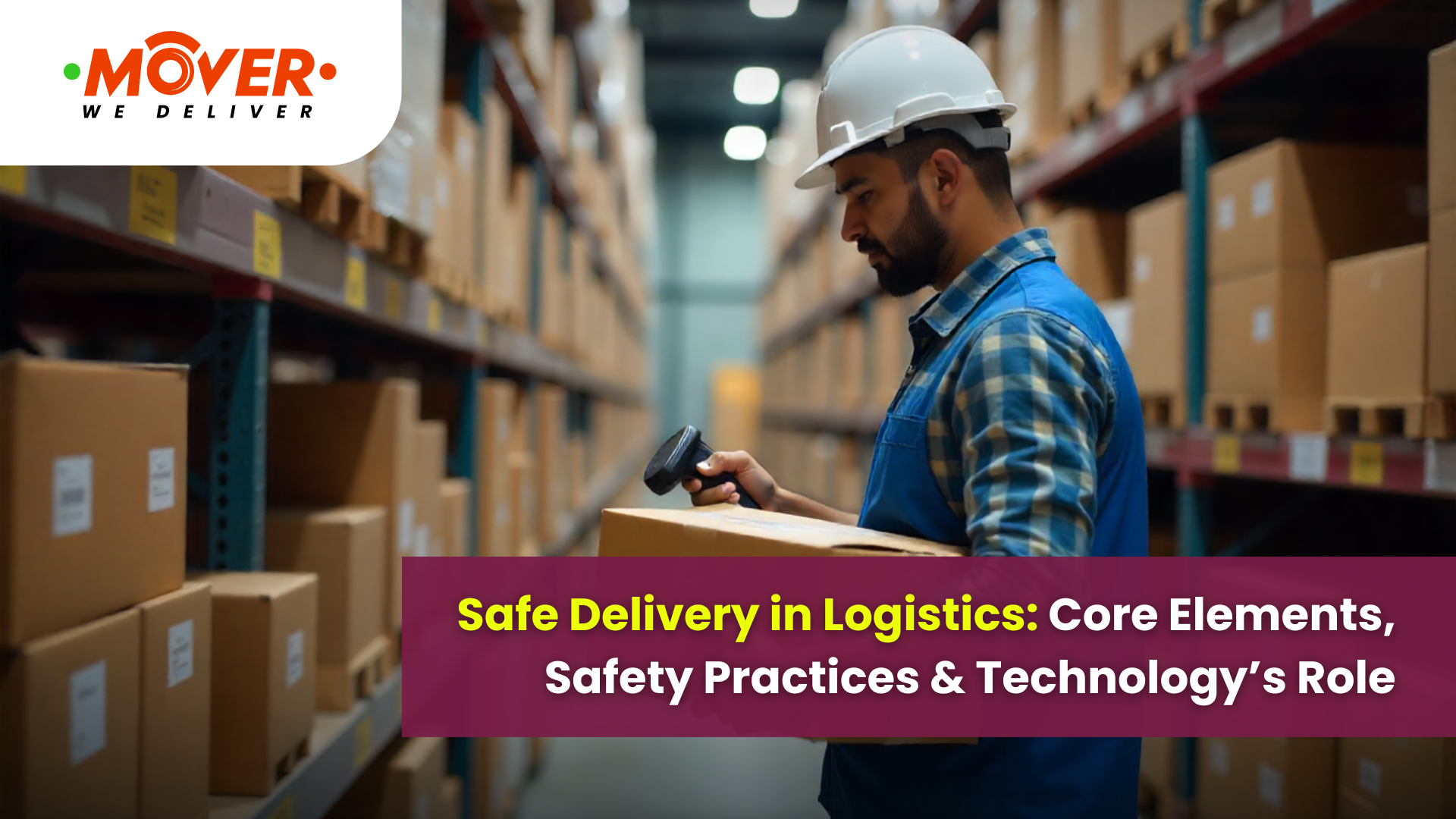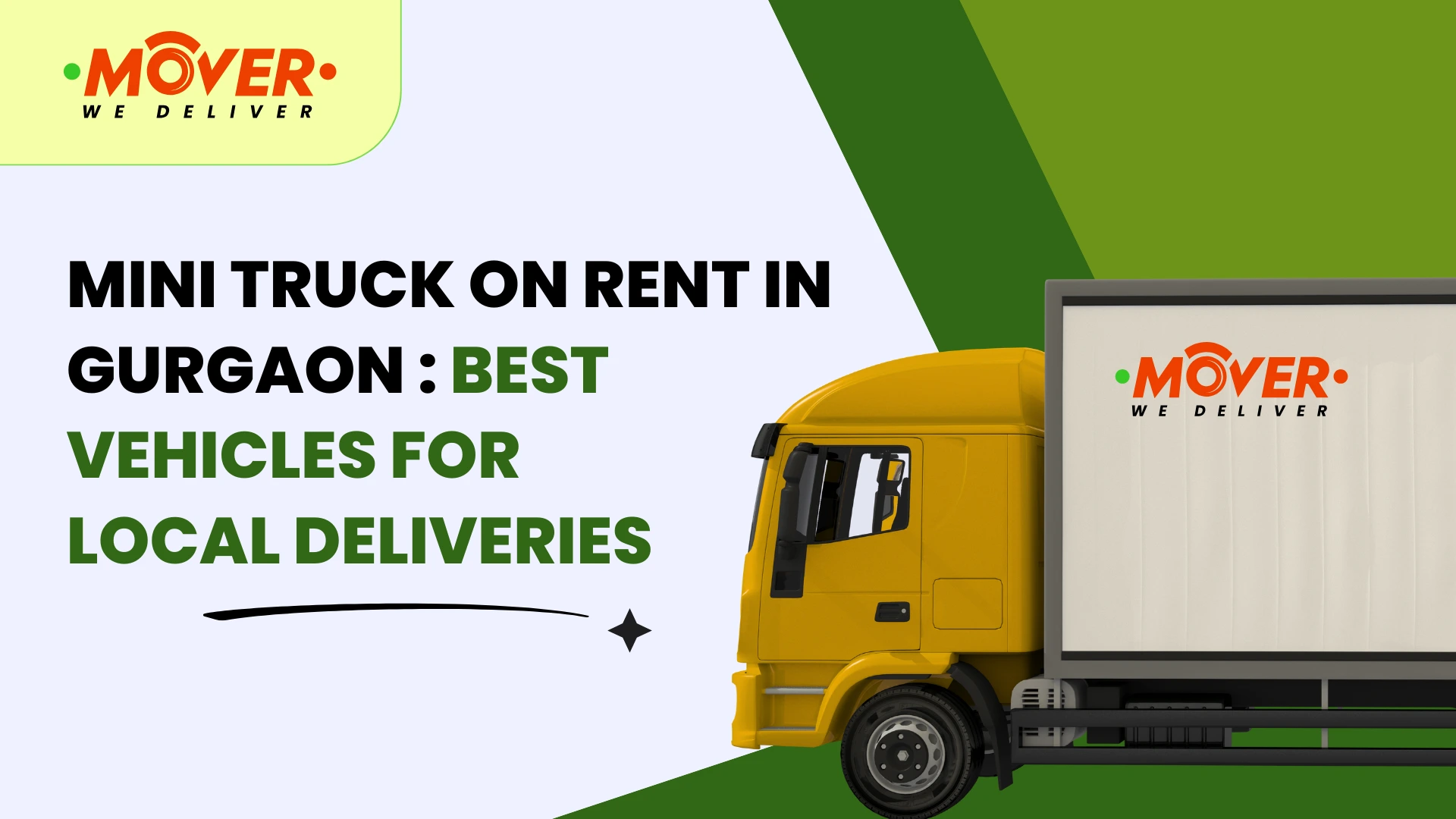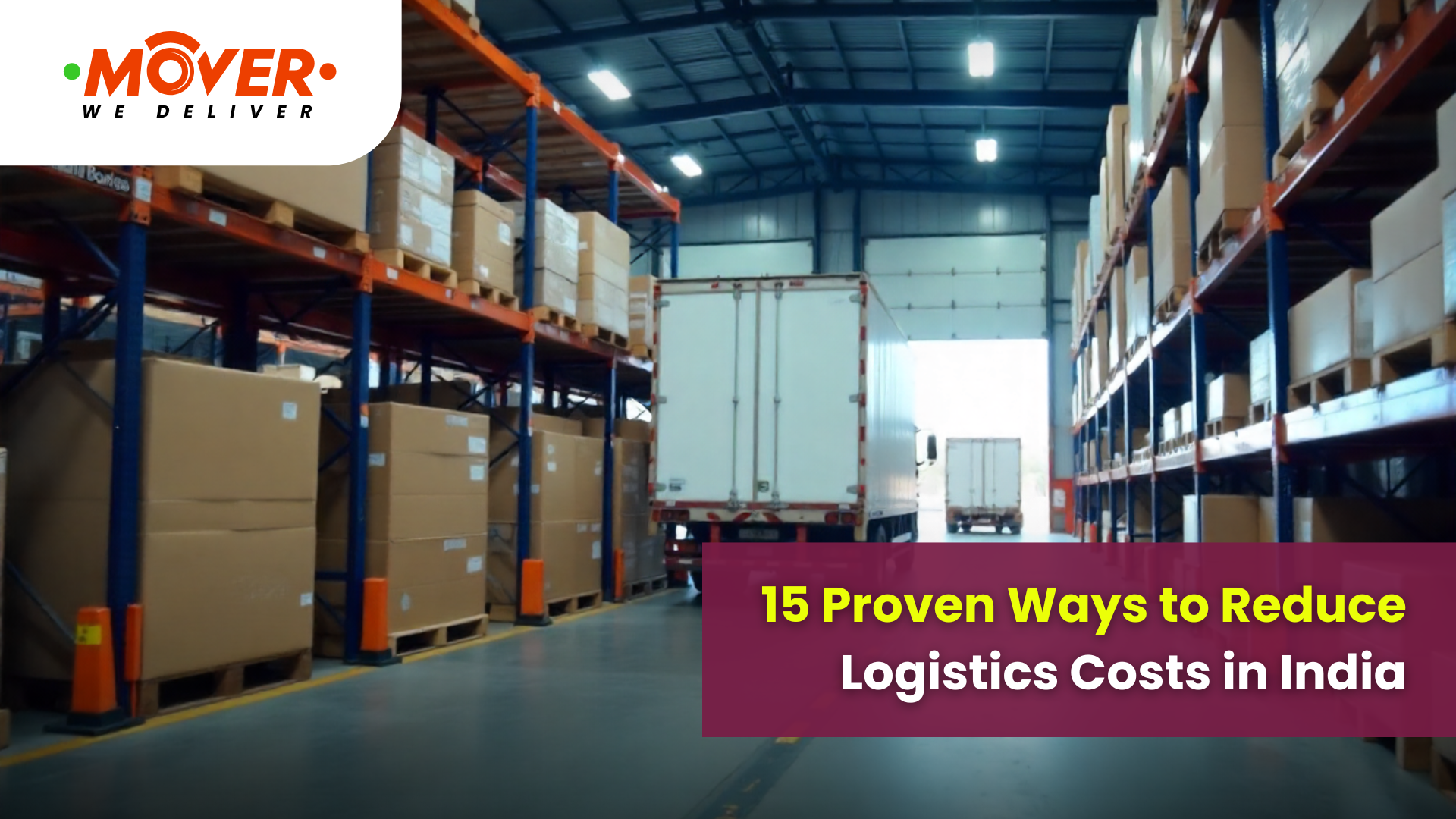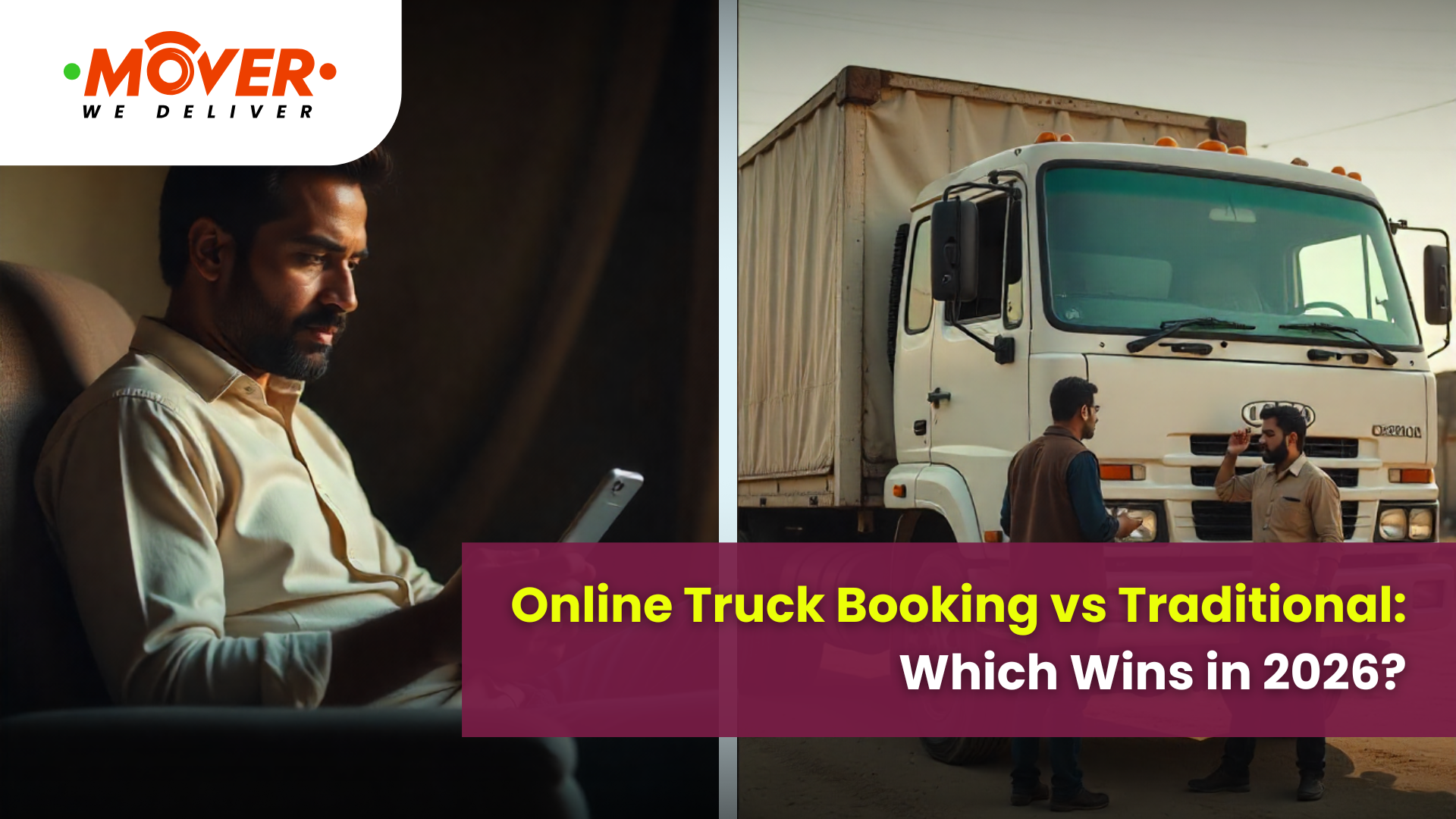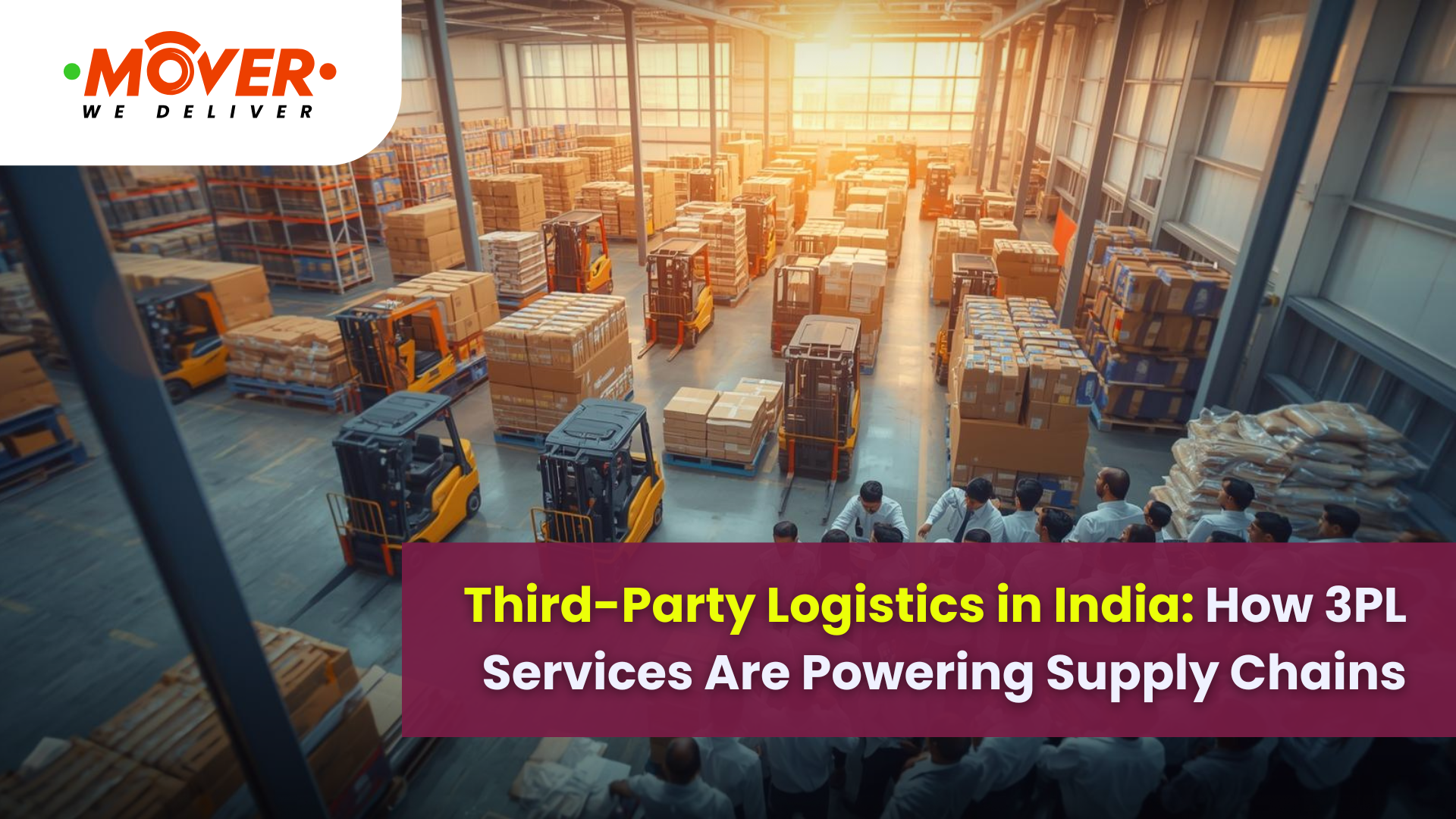Have you ever tracked a parcel and wondered whether it will arrive safely and on time? In today’s fast-moving world, safe delivery in logistics is no longer optional; it’s a necessity. From packaging and transport to final delivery, every step requires precision, safety, and transparency.
Modern delivery logistics go beyond just moving goods. It ensures protection against damage, theft, and mishandling while maintaining driver and customer safety. Every shipment must follow strict Delivery Safety Standards, using smart packaging, GPS tracking, and real-time updates to build customer trust.
Technology now plays a major role in keeping deliveries secure. Truck booking platforms like MOVER are transforming safe logistics operations through verified drivers, live tracking, and contactless drop-offs. Whether it’s a small parcel or a bulk shipment, MOVER ensures a smooth, safe, and efficient journey every time.
In this blog, we’ll explore the key practices, technologies, and safety measures that make logistics reliable, ensuring your goods reach their destination safely.
What Does Safe Delivery in Logistics Mean?
Simply put, Safe Delivery in Logistics means protecting your goods, people, and process throughout the supply chain. It ensures that products are packed securely, handled carefully, transported safely, and delivered intact to the right customer.
Safe delivery covers multiple aspects: from secure parcel delivery and safe loading and handling to driver and customer safety. Companies that follow strong logistics safety practices prevent delays, losses, and damage while building customer confidence.
Digital logistics platforms like MOVER make this even easier through technology-driven systems, ensuring safe, trackable, and transparent operations across every route. In short, safe delivery means combining care, compliance, and technology for a risk-free logistics experience.
Why Safe Delivery in Logistics Matters?
Safe delivery isn’t just about keeping goods damage-free; it’s about trust, efficiency, and reputation. In logistics, even a single broken or delayed shipment can erode customer confidence and brand reliability. By following strong Delivery Safety Standards, businesses can reduce losses, prevent theft, and ensure smoother operations.
For companies managing high delivery volumes, safe delivery also means saving money by avoiding re-shipments or insurance claims. Platforms like MOVER help achieve this through verified drivers, real-time tracking, and secure transport routes. In today’s competitive world of delivery logistics, ensuring every parcel arrives safely is what keeps customers coming back.
Core Elements of Safe Delivery in Logistics
Safe logistics operations depend on multiple safety layers that protect both the goods and the people involved.
Here’s how it works:
1. Driver and Customer Safety in Logistics
Ensuring driver and customer safety in logistics starts with proper training, background verification, rest schedules, and digital ID checks. This not only prevents accidents but also builds trust during every delivery, making logistics operations safer and more reliable for everyone involved.
2. Safe Loading and Handling
Accidents and product damage often occur during loading. Using forklifts, proper safety gear, and maintaining balanced loads ensures safe loading and handling of goods. Trained staff and clear markings help prevent mishaps in warehouses and during vehicle loading, keeping both workers and cargo safe.
3. Packaging and Protection
Strong packaging is the first step toward secure parcel delivery. Using durable boxes, cushioning materials like foam or air pillows, waterproof seals, and moisture barriers protects goods from impact and environmental damage throughout the logistics process.
4. Safe Logistics Operations
A safe logistics network follows clear protocols — from proper dispatch documentation to real-time tracking and cargo insurance. These safe logistics operations help prevent loss, theft, and delays while maintaining transparency and reliability at every step of the supply chain.
Top 10 Proven Logistics Safety Practices
1. Use Smart Tracking Systems
Real-time GPS tracking and automated alerts help monitor every shipment, preventing loss, theft, or route deviation. These systems enhance transparency and accountability in delivery logistics, ensuring that businesses and customers can track their goods safely from dispatch to delivery.
2. Contactless Delivery in Logistics
Modern contactless delivery in logistics uses QR codes or OTP-based confirmations to complete secure deliveries without physical signatures. It minimizes human contact, improves hygiene, and prevents disputes, creating a safer, more efficient experience for both drivers and customers.
3. Temperature & Humidity Monitoring
For sensitive goods like food, medicine, or electronics, maintaining the right temperature and humidity is crucial. IoT-enabled sensors monitor conditions in real time, ensuring safe delivery in logistics and preserving product quality during transit across varying climates.
4. Tamper-Proof Seals
Tamper-proof seals, electronic locks, and smart security tapes prevent unauthorized access during transit. These tools safeguard high-value shipments, reinforcing secure parcel delivery standards and assuring customers that their goods remain untouched and protected throughout the journey.
5. Emergency Protocols
Training drivers to handle breakdowns, heavy rain, or road accidents builds resilience in delivery logistics. Quick-response teams, emergency kits, and digital SOS systems reduce downtime and protect both goods and personnel, ensuring safe logistics operations even under unexpected challenges.
6. Regular Vehicle Inspections
Before every trip, trucks should undergo safety checks — brakes, tires, fuel, and load balance. Routine inspections prevent breakdowns, ensuring safe loading and handling and smooth delivery schedules across the network.
7. Safe Loading and Handling Equipment
Using forklifts, straps, and anti-slip mats ensures that goods are loaded securely. Proper safe loading and handling minimizes damage, prevents accidents, and keeps warehouse and transport teams safe.
8. Route Planning and Geofencing
AI-based route planning avoids unsafe or congested roads. Geofencing alerts managers when a vehicle leaves its designated area, improving control and supporting delivery safety standards across regions.
9. Real-Time Communication Tools
Instant messaging and alert systems connect dispatchers, drivers, and customers. Clear communication reduces confusion, prevents delays, and supports safe delivery in logistics from start to finish.
10. Insurance and Compliance Checks
Goods and vehicles covered by insurance provide financial protection in case of accidents or damage. Compliance with transport laws and logistics safety practices ensures accountability and legal security for all stakeholders.
Technology’s Role in Safe Logistics
Modern technology has completely redefined safe delivery in logistics. With AI-powered route optimization, IoT-enabled sensors, and telematics systems, logistics companies now enjoy real-time visibility into fleet performance and cargo conditions. These innovations reduce delays, improve route safety, and prevent theft or damage during transit.
In last-mile delivery safety, route optimization tools ensure faster, safer drop-offs by avoiding congested or risky areas. Platforms like MOVER, an app-based logistics solution, combine automation, digital verification, and safety checks to guarantee secure parcel delivery every time. From live tracking to automated alerts, these advancements ensure that safe logistics operations remain efficient, transparent, and dependable for businesses and customers alike.
Future of Safe Delivery in Logistics
-
Drone and Autonomous Deliveries: The future of safe delivery in logistics will see drones and self-driving vehicles ensuring faster, contactless, and safer deliveries.
-
Blockchain Verification: Blockchain will enhance transparency with secure, tamper-proof delivery records, improving delivery safety standards.
-
Eco-Friendly Packaging: Companies are adopting sustainable materials and reusable packaging to ensure both safety and environmental responsibility.
-
Smart Safety Standards: Upcoming Delivery Safety Standards will focus on automation, route safety, and real-time tracking across the supply chain.
-
Government Support: Programs like PM Gati Shakti and the National Logistics Policy are driving innovation and safe logistics operations nationwide.
How MOVER Ensures Safe Delivery?
At MOVER, we not only focus on the modern features but also prioritise safety. As you can track each and every shipment with our special real-time GPS tracking. With verified drivers you can also get digital proof of delivery. We believe in providing you complete transparency but providing all the updates of your shipment.
MOVER has GeoFence based safety features which ensures that the rider actually attempts the delivery along with OTP, which ensures the package actually gets delivered. The stringent KYC checks along with AI based fraud detection makes sure MOVER deliveries are flawless and safe.
With 24/7 customer support, MOVER focuses on reducing risks, ensuring safe handling, and building long-term trust in delivery logistics. Whether it’s a single parcel or a bulk consignment, MOVER’s tech-driven platform makes safe delivery in logistics faster, smarter, and more reliable for businesses across India.
Frequently Asked Questions (FAQs) on Safe Delivery in Logistics
1. What is Safe Delivery in Logistics?
Safe Delivery in Logistics means ensuring goods reach customers without damage, theft, or delay through proper handling, tracking, and packaging during transport.
2. Why is safety important in delivery logistics?
Safety reduces product loss, improves reliability, and builds customer trust. Strong logistics safety practices also lower insurance claims and operational costs.
3. What are key logistics safety practices?
They include secure packaging, real-time tracking, trained staff, safe loading and handling, and digital proof of delivery to ensure secure parcel delivery.
4. How does technology improve safe logistics operations?
Technology enables GPS tracking, AI route planning, and digital verification, making safe delivery in logistics more transparent, efficient, and accurate.
5. What is contactless delivery in logistics?
Contactless delivery in logistics minimizes human contact using digital signatures and QR confirmations to ensure hygiene and secure handovers.
6. How can drivers stay safe during deliveries?
Following traffic laws, taking rest breaks, and using tracking tools ensure driver and customer safety in logistics throughout the journey.
7. What are the delivery safety standards in India?
Standards like ISO 9001, ISO 45001, and guidelines under India’s National Logistics Policy (NLP) promote safe logistics operations and handling practices.
8. How does packaging affect delivery safety?
Strong packaging with cushioning, waterproof seals, and tamper-proof labels prevents damage and ensures secure parcel delivery every time.
9. What is last-mile delivery safety?
It focuses on protecting goods and drivers during the final leg of delivery through monitoring, optimized routing, and delivery safety standards.
10. How does MOVER support safe logistics delivery?
MOVER provides real-time tracking, verified drivers, and transparent digital payments, ensuring complete safe delivery in logistics for businesses and customers.
